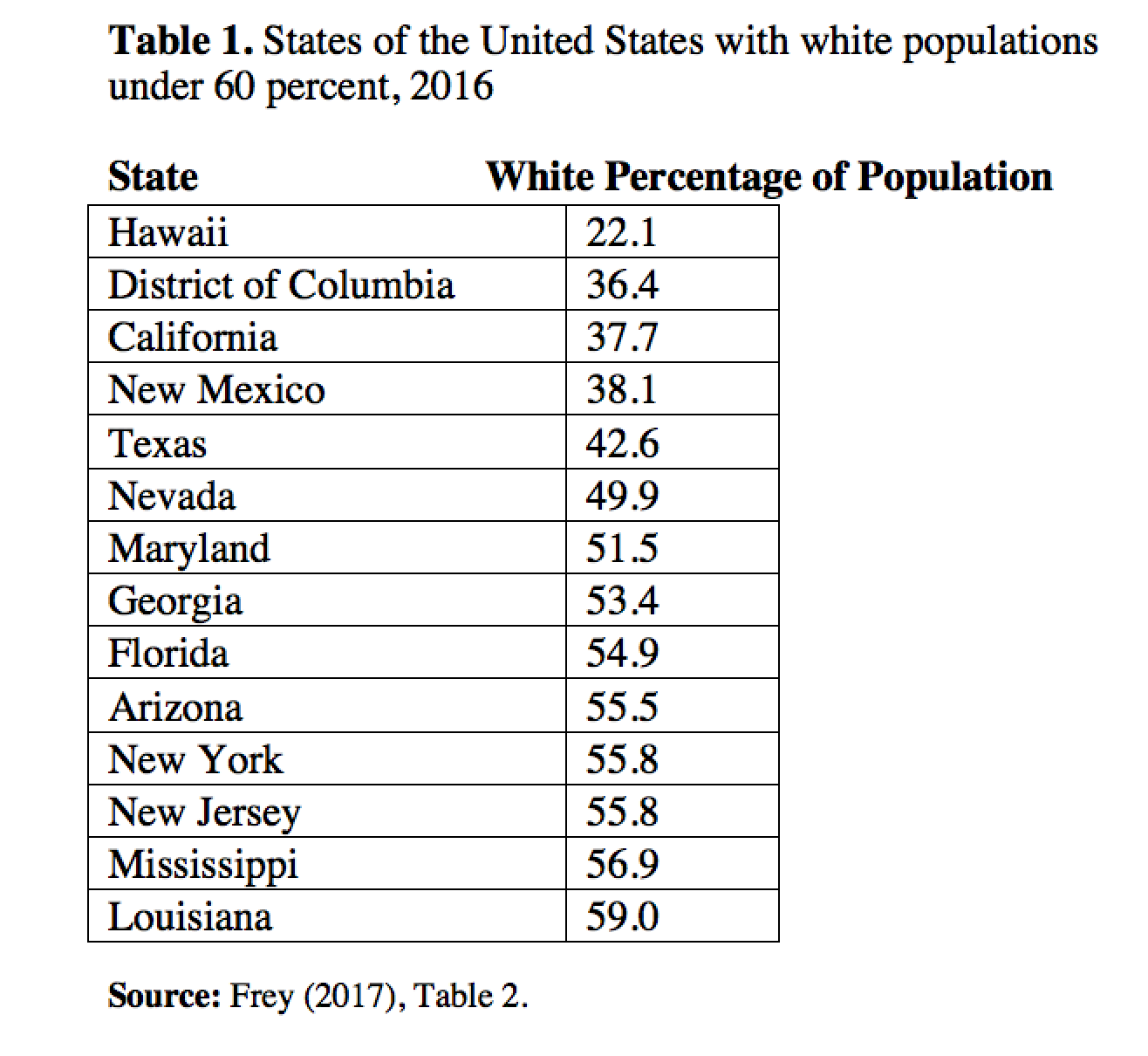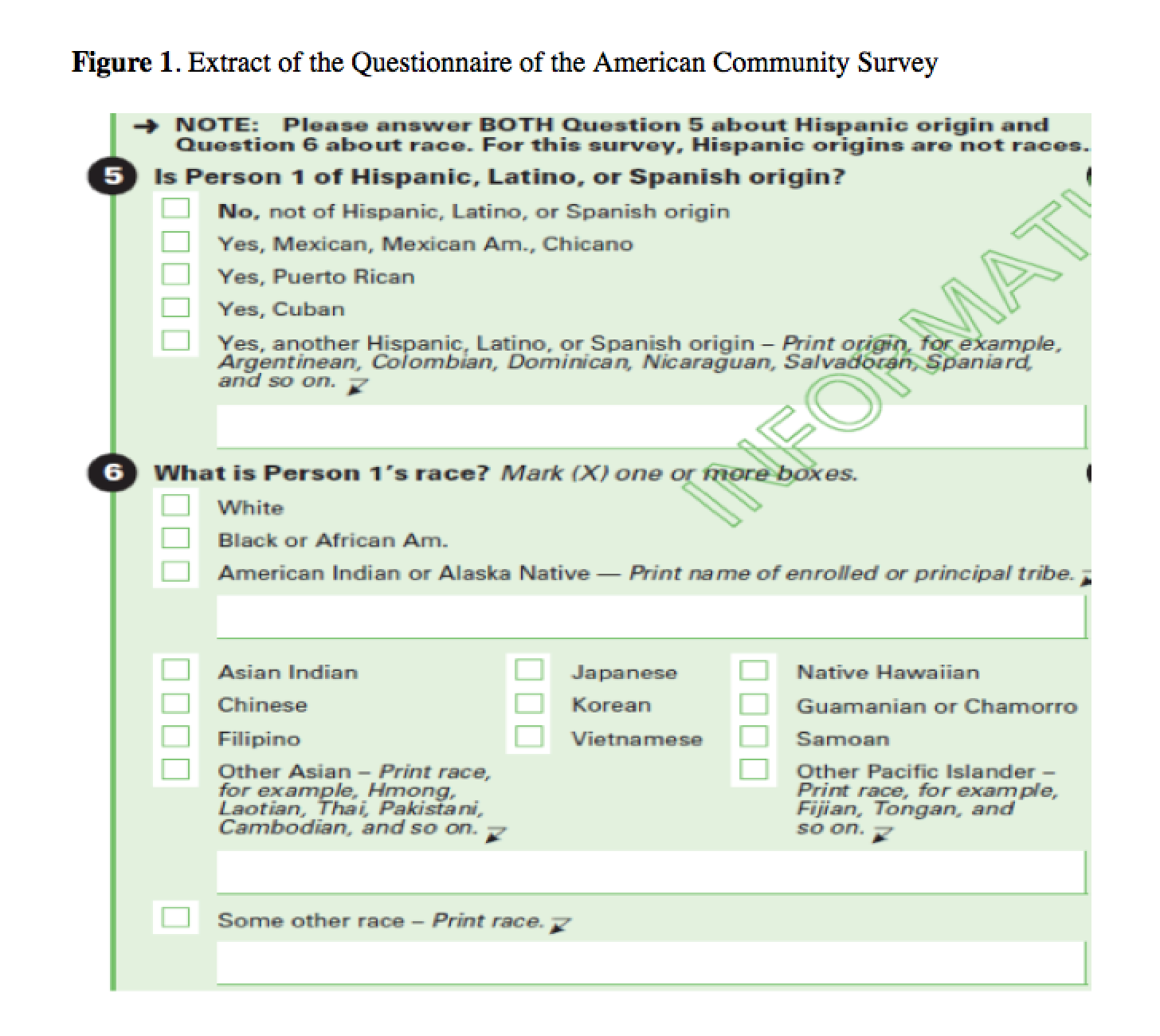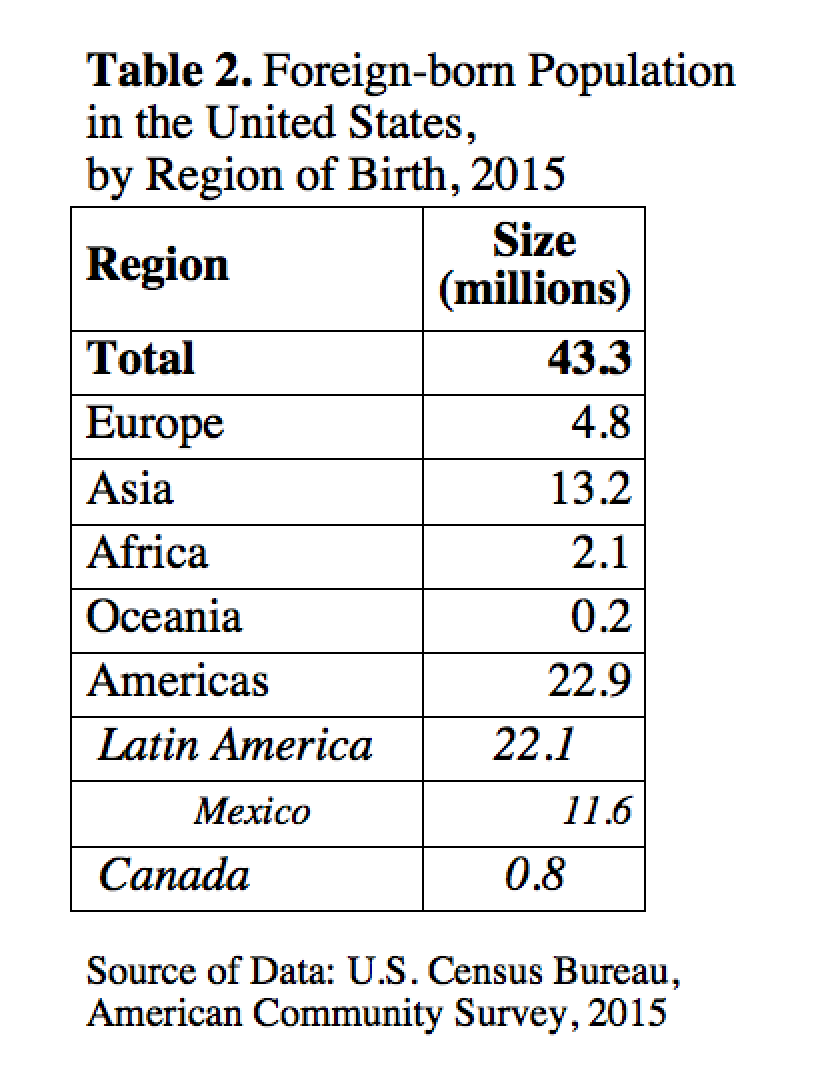We Cant Make America White Again Because Whites Are Already the Minority
In this essay nosotros document the demography of the decline of the white population in the United States, a state with a long history of white supremacy.
Despite the fact that the U.Southward. Constitution and the civil rights legislation of the 1960s guaranteed equality to all people irrespective of race or ethnicity, anybody is far from equal in the The states today. On average, whites are far better off economically and educationally and in many other ways than are minority peoples. Levels of residential segregation past race and ethnicity are still nearly as high equally they were decades agone. Nevertheless, the share of the U.Southward. population that is white has declined over the past 6 decades from about ninety percent in 1950 to 61 pct in 2022 (table i) and will likely drop below 50 percent in some other 30 years: what once was a majority will go a minority relatively presently, and has already become so in a few states. This fact is an of import one because it shows the changing racial structure of the U.South.

Donald Trump won the U.S. presidential ballot by focusing his attention on white people. His campaign slogan, "Brand America great again" has been interpreted by some as really meaning, "Make America white again." But America will never be white once again. America is on its way to condign predominantly nonwhite.

Let united states first note that U.S. federal government agencies use two questions to measure out race/ethnicity. One asks if the person is of Hispanic origin, and the other asks most the person'southward race(s) (Figure 1). A person is defined as white if he or she self-identifies as beingness white and non-Hispanic. A minority (or nonwhite) individual is "anyone who is non a single-race non-Hispanic white" (Passel et al., 2012; Liebler et al., 2017).
First immigrants to the U.S.
Whites were non the first people to settle in what is now the United states. The offset immigrants were a people we know today as American Indians and Alaskan Eskimos (also normally referred to equally Native Americans), arriving in North America effectually 14,000 years ago. When ane of the first white explorers, Christopher Columbus, arrived in America in 1492, there were around 10 meg Indians living in the lands north of United mexican states. But past the 1800s their numbers had dwindled to near i million. They are now the smallest race group in the U.S. (Poston and Bouvier, 2017).
The first sizeable stream of immigrants to the U.S. were whites from England. The arrival of the pilgrims on Plymouth Stone in 1620 in search of religious liberty marked the start of big waves of whites coming to this land. When the U.S. was established equally a land in 1776, whites comprised roughly 80 percent of the population. By 1920, their share had risen to 90 percent, where it stood until 1950 (Poston and Bouvier, 2017).
Whites and minorities in the U.Due south.
The portion of whites in the U.S. population has declined since 1950, falling to 76 percent in 1990, 69 percent in 2000, 64 percent in 2010, and 61 in 2016—the everyman percentage ever recorded (U.South. Census Bureau, 2017).

Although the majority of the U.S. population today is still white (significant, we repeat, both white and non-Hispanic), nonwhites account for more half of the population of Hawaii, the Commune of Columbia, California, New Mexico, Texas and Nevada. Over the next 10 to fifteen years, these 6 majority-minority states (i.east. where racial or indigenous minorities make up a majority of the population) will likely be joined by as many as eight other states where whites now make up less than threescore percent of the population (Table 1). Census Agency projections show that the United states will be majority-minority past 2050 (Colby and Ortman, 2015). We projection this will occur around 2044. Indeed, by as before long equally 2022 in the U.S. in that location will be fewer white than nonwhite children (U.S. Census Bureau, 2017).
The nonwhite (minority) population is growing much more rapidly than the white population. Indeed, minorities accounted for 92 per centum of the U.S. population growth between 2010 and 2016, with Latinos (also referred to as Hispanics) making up merely nether half of the nation'southward overall growth (U.Due south. Census Bureau, 2017).
The census of the declining white population
Why are the numbers of white people failing, and why are nonwhites increasing? The answer is bones demography—births, deaths and immigration. Let us consider each of these demographic components.
White women have an average of 1.seven children over their lifetimes compared to Latina women averaging 2.2 (Poston and Bouvier, 2017). The total fertility rates (TFRs) of blacks, Asians and American Indians are in between. Thus, whites have fewer births compared to nonwhites.
Non only are there major differences between whites and minorities in their TFRs, there are besides large differences in age structure. While 62 percent of Latinas xv years of age or older are in the childbearing ages (15-44), but 42 percent of white women are in this age group (U.Due south. Census Bureau, 2017).
How about mortality? Latinos take lower mortality rates than whites; this is known as the epidemiological (or Latino) paradox (Sáenz and Morales, 2012). Just the contrary is truthful for blacks and American Indians who have college mortality rates than whites (Poston and Bouvier, 2017). Withal, considering of their older age structure, whites accounted for 78 percent of all U.South. deaths occurring in 2022 (Eye for Disease Control, 2017). Indeed, there were more than white deaths than white births in 17 states in 2014, including California, Florida, Pennsylvania, New Jersey, Arizona, and Massachusetts (Sáenz and Johnson, 2016).
How about immigration to the U.Due south.? Of the more than 43 one thousand thousand foreign-born persons living in the U.S. in 2015, 82 per centum originated in Latin America and Asia. Only 11 pct were born in Europe (Table 2).
The futurity of whites in the U.S.
The Usa is undergoing major changes in its racial structure resulting from demographic differences between whites and nonwhites. The crumbling white population, aslope a more youthful minority population, especially in the example of Latinos, will effect in the U.S. becoming a majority-minority state in about 2044. This transformation is already underway in certain states and will get together pace in the side by side 10 to 15 years.
This demographic shift in the United States has resulted in many whites proclaiming that they are losing their land, and that they already are, or will soon go, a minority group. Certainly Donald Trump has capitalized on this sentiment and has further given license to his supporters to express their racism and hatred toward people of color (another term for nonwhites) through his own words and actions.
White supremacy is a powerful system that has created and perpetuated racial inequality in the United states (Bonilla-Silva, 2014). For example, following the terminate of slavery in 1865, the Jim Crow system was established to separate blacks from whites and to continue blacks at the bottom of the stratification system (Feagin, 2013). In addition, after the passage of civil rights legislation in the 1960s, whites used the court system to dismantle the socioeconomic and political gains of minorities and established massive incarceration that disproportionately ensnared blacks and Latinos in prisons (Alexander, 2012).
While whites will become a numerical minority in the coming decades, they will maintain their dominant position socioeconomically and politically. The massive economical resource and political ability that whites take amassed volition non erode as their numbers wane. In fact, every bit people of color accept increased their numbers, the white political mechanism is already working to minimize the political power of nonwhites via such political ploys equally gerrymandering (drawing political districts in ways that disadvantage people of color) and voter identification laws that thwart the political representation of groups of colour.
References
Alexander, Michelle. 2012. The New Jim Crow: Mass Incarceration in the Historic period of Colorblindness. New York: The New Press.
Bonilla-Silva, Eduardo. 2014. Racism without Racists: Colour-blind Racism and the Persistence of Racial Inequality in America. fourthursday ed. Lanham, MD: Rowman & Littlefield.
Middle for Disease Command. 2017. Underlying Causes of Deaths, 1999-2015 Request. CDC WONDER. Accessed online at on July 31, 2017.
Colby, Sandra L. and Jennifer M. Ortman. 2015. "Projections of the Size and Limerick of the U.S. Population: 2022 to 2060." Current Population Reports P25-114 (March). Washington, D.C.: U.S. Census Bureau.
Feagin, Joe R. 2013. Racist America: Roots, Current Realities, and Future Reparations. 3rd ed. New York: Routledge.
Frey, William H. 2017. "Census Shows Nonmetropolitan America Is Whiter, Getting Older, and Losing Population: Will It Retain Political Clout?" Washington, D.C.: Brookings, The Avenue (June 27):
Liebler C.A., S.R. Porter, L.Eastward. Fernandez, J.M. Noon, S.R. Ennis. 2017. "Think race and ethnicity are permanent? Retrieve again." Neodemos, 26 June
Passel, Jeffrey S., Gretchen Livingston, and D'Vera Cohn. 2012. "Explaining Why Minority Births At present Outnumber White Births." Washington, D.C.: Pew Research Center, Social and Demographic Trends (May 17):
Poston, Dudley L., Jr. and Leon F. Bouvier. 2017. Population and Gild: An Introduction to Census. 2d Edition. New York: Cambridge University Press.
Sáenz, Rogelio, and Kenneth G. Johnson. 2016. "White Deaths Exceed Deaths in One-Third of U.S. States." Carsey Research, National Result Brief # 110, Autumn, 2016.
Sáenz, Rogelio and Trinidad Morales. 2012. "The Latino Paradox." Pp. 47-73 in R.R Verdugo
(ed.), The Demography of the Hispanic Population: Selected Essays. Charlotte, NC:
Information Age Publishing.
U.S. Census Bureau. 2014. Through the Decades, History: Index of Questions. Washington,
D.C.: U.S. Regime Printing Office.
U.S. Demography Bureau. 2017. Annual Estimates of the Resident Population by Sex, Age, Race, and Hispanic Origin for the U.s.a. and States: April 1, 2010 to July i, 2016. Accessed at on July 30, 2017.
Source: https://www.niussp.org/migration-and-foreigners/majority-minority-declining-u-s-white-population/

0 Response to "We Cant Make America White Again Because Whites Are Already the Minority"
Post a Comment